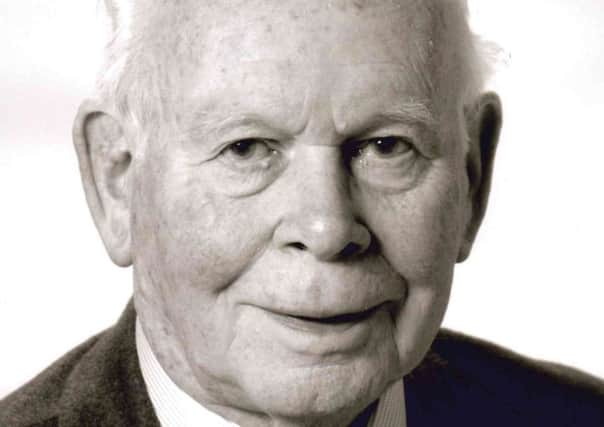Obituary: Russell Leather, electrical engineer and chairman of the Gannochy Trust


Although Dr Leather was born in Kent, his family moved to Glasgow then Edinburgh when he was a child and he went to the capital’s George Heriot’s School.
In 1942 he volunteered for the Royal Corps of Signals and was sent on a short and very intensive course on electromagnetic radiation and, in his own words, “things that might be helpful in the war” at Christchurch College, Oxford. He saw active service in Assam, Burma (now Myanmar) and Singapore.
Advertisement
Hide AdAdvertisement
Hide AdAfter the war Dr Leather studied at Edinburgh University, graduating with a degree in electrical engineering. He spent most of his career working for Ferranti, initially in Edinburgh and latterly in Dundee. During his career Dr Leather came up with no fewer than 25 patents. He readily admitted that “most patents are not worth that much” but on probing he acknowledged that one or two of his were worth a great deal. As a manager he built up a subsidiary business within the company which worked with these patents and which was very profitable.
He was invited to become a trustee of the Gannochy Trust in 1968 while he was still working with Ferranti. The trust is a major Scottish grant-making trust established by AK Bell, whisky distiller and philanthropist, in 1937. Some grant-making trusts rely solely on invested capital from which they derive income which is distributed to charities. The Gannochy Trust is different: AK Bell, before he founded the trust, had built 149 houses in a model estate and these, together with three farms extending in all to 580 acres, and other properties in Perth, in particular the Doo’cot cricket ground, were donated to the trust. The trust therefore has a continuing responsibility for managing those properties and also further properties which, in fulfilling the trust’s purposes, have been developed over the years.
The introduction of specific charity regulation under the auspices of OSCR increased the responsibility of trustees, particularly the chairman. All of this Dr Leather took in his stride. He brought his managerial skills to bear both in bringing a more focused direction to the trust and in his detailed understanding of many of the technical projects which came to the trust’s attention.
Dr Leather was pivotal in the Gannochy Trust’s contribution to the fabric of Perth and Kinross with projects such as the funding, building and subsequent development of Bell’s Sports Centre (which at the time it was completed was the largest domed building in Britain), Perth Leisure Pool, Dewars Centre, the AK Bell library and as Chair of the consultative committee saw the Trust make major contributions to the three phases of renovation of the Perth theatre between 1980 and 1991.
Across Scotland he oversaw the Trust’s support to major projects such as the National Gallery’s Playfair Building and the Museum of Scotland in Edinburgh, the Kelvingrove Gallery in Glasgow and the development of sports facilities at Stirling University.
Dr Leather took an informed interest in medical research at Dundee University. The value of the Trust’s and his own involvement were recognised in 1988 when the university conferred on him an honorary doctorate in Law. He later initiated, then developed and brought into effect, the trust’s participation in the prestigious Gannochy Trust Innovation Award of the Royal Society of Edinburgh and served on its selection committee for the seven years for which the Award was made.
Dr Leather served on many other bodies. Examples are: the Kincarrathie Trust which runs AK Bell’s Perth home as Kincarrathie House Care Home, Perth and Kinross Heritage Trust and as a founder member of Perth Civic Trust he helped to save Perth Waterworks, which has now became the Ferguson Gallery.
Dr Leather’s commitment to projects was always exemplary and he positively encouraged high standards. This is evident today from his involvement with Perth Concert Hall. To fulfil the purposes of the Trust’s major grant he and his co-trustees insisted that the hall should primarily be a concert hall and not a conference centre, so he paid great attention to ensure a high quality acoustic.
Advertisement
Hide AdAdvertisement
Hide AdThe numerous expressions of pleasure by many audiences and art critics, as well as the broad appreciation of musicians regarding the acoustics, are testimony that he was successful.
Throughout his life Dr Leather was wonderfully supported by his wife Muriel, who survives him along with his son Christopher, daughter Ann and four grandchildren. Dr Leather will also be remembered by his many friends for his warmth, his hospitality and his humour.
A service of thanksgiving will be held at 2.30 pm on Friday 16 February 2018 in St Leonards-in-the-Fields Church, Perth, the Church of which Dr Leather was an elder.
CONTRIBUTED